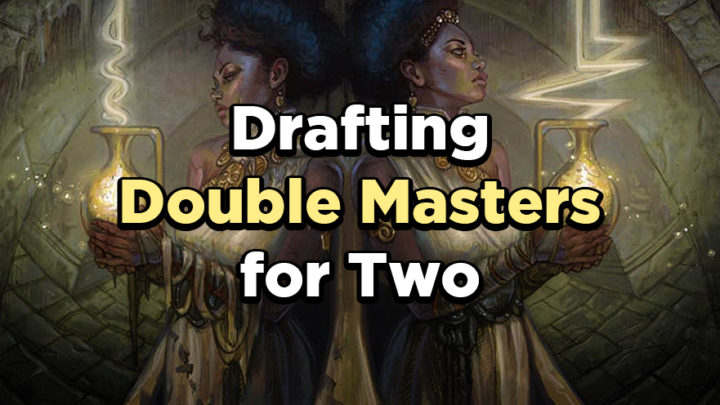So, you want to draft Double Masters, Magic’s newest “greatest hits” set. Good news: it’s available to draft on Magic Online this Thursday, August 6th! But what if you don’t have a Magic Online account or seven other people to draft with? Playing Magic in large groups is awfully difficult these days.
But wait! Do you have at least one other person in your home that can play Magic with you? If so, you can still enjoy playing Limited with Double Masters!
We’ve collected five ways that you can play two-player Limited in your own home. If you’re new to Magic or need a refresher, here are the rules for sealed and mini-master / pack wars; you’ll need a working knowledge of both formats to get started.
Pai Gow Magic

Pai Gow Magic is a relatively new format that’s simple to play. All you need is one booster pack per player and you’re ready to get started. The games are quick, but numerous, and no two games are quite the same!
Setup:
- Each player opens a pack, reviewing the cards without showing the other player.
- Each player uses their pack’s cards to form five face-down piles of three cards each. Keep track of who finishes forming their piles first!
- Randomize the five piles. You may ask your opponent to rearrange them for you, if you’d like.
How to Play:
- Pai Gow Magic matches are best three out of five games.
- For each game, each player starts with five life and one of their face-down piles as their starting hand.
- Each player has unlimited mana of any combination of colors.
- Players don’t lose from not being able to draw a card due to an empty library.
- The player who finished forming their piles first goes first during the first game.
- The player who loses a game goes first in the next game.
- If the previous game is a draw, the player who went first in the previous game is first player.
- If no one wins three games out of five, the player who won the most games is the winner.
The key to winning in Pai Gow Magic is to distribute your cards wisely. You want to make sure that several of your face-down piles have a good chance to win. Fortunately, with Double Masters, you’ll have two rares to help you out, plus more powerful commons and uncommons than you’d find in your average booster pack!
Solomon Draft
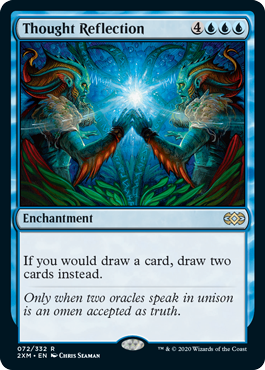
If you’re really hankering to draft a few packs of Double Masters, you could try Solomon Draft. This type of draft forces you to think about what both you and your opponent are drafting. If you like Fact or Fiction effects in Magic, you’ll enjoy the same kind of decision-making in Solomon Draft.
Setup:
- Open six packs without looking at the cards and shuffle them into one face-down stack.
- Randomly determine who will draft first. The player drafting second will choose who plays first during the first game.
How to Draft:
- The first player to draft flips over eight cards from the top of the stack and divides the cards into two piles. These piles don’t need to have four cards each. For example, you can divide them into a two-card pile and a six-card pile.
- Once the cards are divided into two piles, the other player chooses one of the piles. The chosen pile is added to their drafted cards.
- The other player adds the remaining pile to their drafted cards.
- Once both piles are drafted, the player that didn’t flip over cards last time flips over eight more cards.
- Note: The final group of cards will include ten cards instead of eight.
After drafting, follow the usual rules for a traditional draft: forty-card decks, twenty life, normal mulligan rules, etc. Remember that the player who drafted second decides who will play first during the first game.
Double Masters makes Solomon Draft especially interesting because there are two rares in each pack. Will piles tend to be more evenly split with a rare in each pile? There’s only one way to find out!
Winston Draft
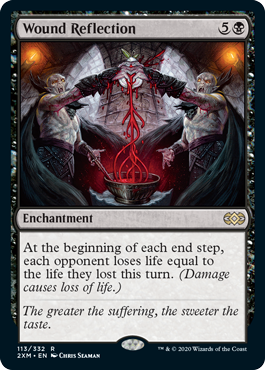
While cards are drafted face-up in Solomon Draft, Winston Draft challenges you to work with hidden information. Should you pick the first card you see, or pass it up for the chance of drafting a better one? If you like a bit more chance and/or risk-versus-reward decision-making, give Winston Draft a try!
Setup:
- Open six packs without looking at the cards and shuffle into one face-down stack. We’ll call this the “main stack.”
- Randomly determine who will draft first. The player drafting second will choose who plays first during the first game.
- Place the top three cards from the stack face-down on the table (without looking at them!) to form three piles.
- Determine which pile is first, second, and third.
How to Draft:
- The first player to draft looks at the card in the first pile. That player decides whether to draft it or move on to the next pile.
- When a player drafts a pile, they replace it with one face-down card from the top of the main stack.
- When a player decides to not draft a pile, they add one card from the top of the main stack face-down to that pile. Then they look at the next pile.
- After a player drafts a pile, the other player then goes through the same process. Piles will start to grow over time. When drafting a pile, make sure to draft all the cards in that pile!
- If a player decides not to draft any of the three piles, they must draft the top card of the main stack instead.
- Continue drafting until there are no more cards in the piles and the main stack is empty.
After drafting, follow the usual rules for a traditional draft. Remember that the player who drafted second decides who will play first during the first game.
The ability to have secret picks is an interesting dynamic. On one hand, you can surprise your opponent in games with something they didn’t see. But there’s also some known information in the draft: if you pass up on a pile and your opponent drafts it later, you’ll know some of what they picked. Did they pick up a pile because of the card you know about? Or did your opponent draft that pile because of the one card you don’t know?
Double Masters packs will yield more cards worth drafting than an average Winston Draft. With two rares and powerful cards at lower rarities, you might be less inclined to pass up a pile. The choices are more challenging and, thus, more interesting. Plus, it’d be awesome if you secretly drafted Karn and all the Tron lands without your opponent knowing.
Winchester Draft
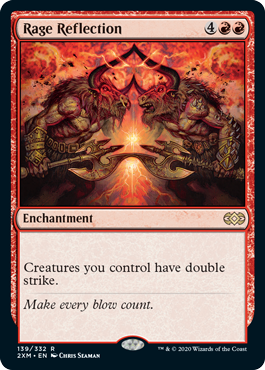
Let’s say you love the idea of Winston Draft but don’t like chance or secret elements. Luckily, there’s Winchester Draft!
Winchester Draft is a bit of a hybrid between Winston Draft and Solomon Draft. You’ll choose between piles of cards that grow in size over the course of the draft, but you’ll draft them face-up, as you would in Solomon Draft. You might like this format if you prefer a quicker or more skill-testing draft.
Setup:
- Each player opens three packs without looking at the cards and shuffles them into a single face-down stack.
- Randomly determine who gets to choose whether to draft first. The player drafting second gets to choose who plays first during the first game.
- Each player puts the top two cards of their stack face-up in the center of the table. Then, they place each card into its own pile to make four single-card piles. Each player is responsible for managing two piles throughout the draft.
How to Draft:
- The first player to draft chooses one of the four piles. That player drafts all the cards in that pile. The first drafted pile contains a single card.
- After a player drafts a pile, each player adds a card face-up from their stack to each of their piles. Each pile that wasn’t drafted has one additional card than before. There should now be a single card replacing the pile that was drafted.
- After adding a card to each pile, the other player drafts a pile.
- Continue until there are no more cards among the players’ stacks and piles.
After drafting, follow the usual rules for a traditional draft. Remember that the player who drafted second decides who will play first during the first game.
Winchester Draft allows you to know what your opponent is drafting and attempt to counter their strategy. But unlike Solomon Draft, you don’t need to spend any time figuring out optimal pile divisions. There’s still some element of chance based on what happens to flip over, but it’s reduced. It’s also nice to not have to keep peeking at face-down piles one-by-one like in Winston Draft.
With Double Masters, there will be more powerful, appealing options that fill the piles. This is good because you’re more likely to have meaningful choices when choosing a pile to draft.
Grid Draft
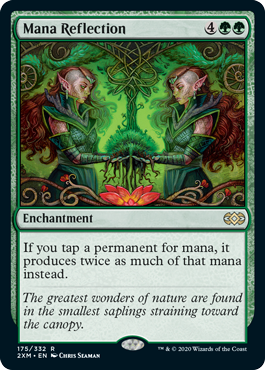
So, you like Winchester’s quick picks of face-up cards, but you want even less variance. Well, you should check out Grid Draft!
Grid Draft is normally a Cube drafting variant, but you can simulate the same thing using eleven Double Masters packs! This format leads to more focused decks and allows you to deny your opponent precious resources. I recommend Grid Draft if you enjoy the feeling of skillful sparring with your opponent during draft.
Setup:
- Open eleven Double Masters packs without looking at the cards and shuffle them into a face-down stack.
- Randomly determine who will draft first.
How to Draft:
- Flip over the top nine cards from the stack, arranging them into a 3×3 grid. Be sure to flip over cards into the grid in order. (This is to eliminate any chance of bias; for example, you may decide to arrange the cards in order of left-to-right then top-to-bottom.)
- The first player chooses either a column or a row. That player drafts all the cards in that row or column.
- Leaving the grid intact, the second player chooses a column or row. It’s OK if the column or row contains just two cards, due to the other player’s pick. The second player then drafts the chosen column or row.
- After both players draft a column or row from a pack, set aside the rest of the undrafted cards. Those cards won’t be used anymore for this Grid Draft.
- For the next pack, the previous player that drafted second now drafts first.
- Continue until the stack has just three cards left in it. Set aside those remaining few cards along with the rest of the undrafted cards.
After drafting, follow the usual rules for a traditional draft. Randomly determine who chooses whether to go first during the first game.
When you can only choose two or three cards per pack, you can afford to spend a draft pick on denying your opponent cards. Keep in mind that, if your strategy depends on finding specific cards, your opponent may stop you!
Combining Double Masters with the focused Grid Draft format is a recipe for high-powered Limited decks!
IMAGE SUGGESTION: Thespian’s Stage or Urza’s Tower
Two Can Play at That Game
Thanks for reading! There are many ways for you to get that Limited gameplay experience with your Double Masters packs – a lot more than the handful listed here!
Have a favorite two-player Limited format? Let me know on Twitter at @bradleyrose.
Until next time, have fun playing with just the two of you.

Bradley is a co-host of a weekly Magic: The Gathering design podcast, Beacon of Creation. He was among the Top 101 contestants in Wizards of the Coast’s Great Designer Search 2. He enjoys crafting custom Magic product experiences, like Archfrenemies, and building Commander decks with creative constraints.

